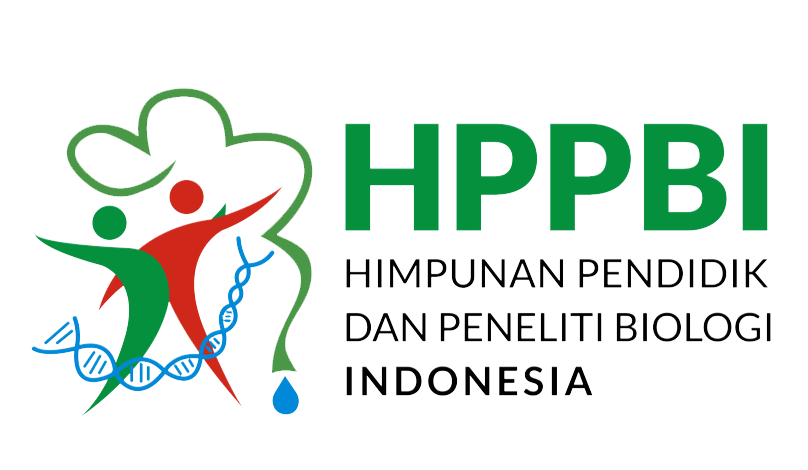EFEKTIVITAS EKSTRAK BIJI PANGI (Pangium edule Reinw) TERHADAP MORTALITAS LARVA NYAMUK Anopheles
Abstract
Background: Eradication of mosquito nests in Maluku is still done by fogging and with other chemicals. But on the other hand can cause disease in the respiratory tract and environmental damage. Pangi seeds contain alkaloids and potentially saponin compounds as larvacide to kill mosquito larvae.
Method: The study design was using RAL (Completely Randomized Design) with 5 treatments ie K1 (control), K2 0,04%, K3 0,08%, K4 0,16% and K5 0,23% with each 25 larvae with 3 repetitions observed for 24 hours. One Way ANOVA Test Result and Probit LC50 Analysis were used to find out the extract of pangi seed which is effective in killing mosquitoes.
Result: One Way ANOVA test result obtained Fcount value is 467.063 with Sig value. 0.000 and probit analysis obtained 24 hours LC50 value of 0.053% means that the extract of pangi seed (Pangium edule Reinw.) Is effective against mortality of Anopheles mosquito larvae.
Conclusion: Seed extract (Pangium edule Reinw) effect on mortality of Anopheles mosquito larvae with LC50 extract value of Pangi (Pangium edule Reinw) in 24 hours was 0.053%. Each concentration of pangi seed extract (Pangium edule Reinw) had an effect on mortality of Anopheles mosquito larvae within 24 hours of observation time. There was a correlation between various concentrations of Pangi (Pangium edule Reinw) with the mortality of Anopheles mosquito larvae with value (p) = 0.000 and the relationship level was very strong with Pearson correlation value 0.891.
Downloads
References
Dinas Kesehatan Provinsi Maluku, 2013. (online) http://www.depkes.go.id/ resources/download/profil/PROFIL_KES_PROVINSI_2012/30_Profil_Kes.Prov.Maluku_2012.pdf.
Diakses tanggal 31 November 2015.
Erni, R.A.H. 2006. Picung, pengawet alami ikan segar. (online) Website:www.nuraulia.multiply.com. Diakses tanggal 20 Juni 2015.
Hadi, H. Mochamad., U. Tarwotjo., R Rahadian. 2009. Biologi Insekta Entomologi. Yogyakarta: Graha Ilmu.
Heriyanto, N.M., E. Subandiono. 2008. Ekologi Tanaman Kluwek/Pakem (Pangium edule Reinw.) di Taman Nasional Meru Betiri Jawa Timur. Buletin Plasma Nutfah 14(1):33-42
Hoe, V.B., K.A.Siong. 2002 The Nutritional Value of Indigenous Friuts and Vegetables in Sarawak. Asia Pasific Journal of Clinical Nutrition. Vol 8 Issue 1.pp.24-31.
Jumar, 2000. Etimologi Serangga. PT. Rineka Cipta, Jakarta
Pagaya, J, M Nindatu, F Ririhena. 2005. Analisa Kepadatan Larva dan Survei Tempat perindukan Nyamuk Aedes (Diptera: Culicidae) di Dusun waimahu Kecamatan Nusaniwe, Kota Ambon. Majalah Kedokteran Tropis Indonesia, Ambon.
Sanaky. 2014. Hubungan dan Peta Sebaran Malaria di Kota Ambon. Skripsi. Fakultas Kesehatan Masyarakat, Universitas Hasanuddin, Makassar.
Sugiyono. 2002. Statistika untuk Penelitian. Bandung: Alfabeta
Tennyson S, Ravindran KJ, Arivoli S. (2012) Screening of twenty five plant extracts for larvicidal activity against Culex quinquefasciatus Say (Diptera: Culicidae). Asian Pac J Trop Biomed. S1130–S1134
Warintek. 2006. Klasifikasi. http://warintek. progressio.or.id/. Diakses 1 Juli 2015
Watuguly, T. 2003. Uji Toksisitas Bioinsektisida Ekstrak Biji Mahkota Dewa (Phaleria papuana Warb.) terhadap Mortalitas Nyamuk Aedes agypti Linn di Laboratorium. Universitas Airlangga. Surabaya.
Widodo, W. 2005. Tanaman Beracun Dalam Kehidupan Ternak. Malang: Universitas Muhamadiyah Malang.
Wijaya, L.A. 2009. Daya Bunuh Ekstrak Biji Kecubung (Datura Metel) terhadap Larva Aedes aegypti. Skripsi. Surakarta; Fakultas Kedokteran Universitas Sebelas Maret, hal 7.
Yuningsih. 2008. Kandungan dan Stabilitas Sianida Dalam Tanaman Picung (Pangium edule Reinw.) Serta Pemanfaatannya. Jurnal Balai Besar Penelitian Veteriner.http://balittro. litbang.deptan.go.id/ind/images/stories/edsus/vol20n02/4stabilitas.pdf. diakses tanggal 11 Juli 2015
Authors who publish with BIOPENDIX: Jurnal Biologi, Pendidikan dan Terapan agree to the following terms:
- Authors retain copyright and grant the journal right of first publication with the work simultaneously licensed under Creative Commons Atribution-ShareAlike 4.0 International License (CC BY-SA 4.0) that allows others to share the work with an acknowledgment of the work's authorship and initial publication in this journal.
- Authors are able to enter into separate, additional contractual arrangements for the non-exclusive distribution of the journal's published version of the work (e.g., post it to an institutional repository or publish it in a book), with an acknowledgment of its initial publication in this journal.
- Authors are permitted and encouraged to post their work online (e.g., in institutional repositories or on their website) prior to and during the submission process, as it can lead to productive exchanges, as well as earlier and greater citation of published work.

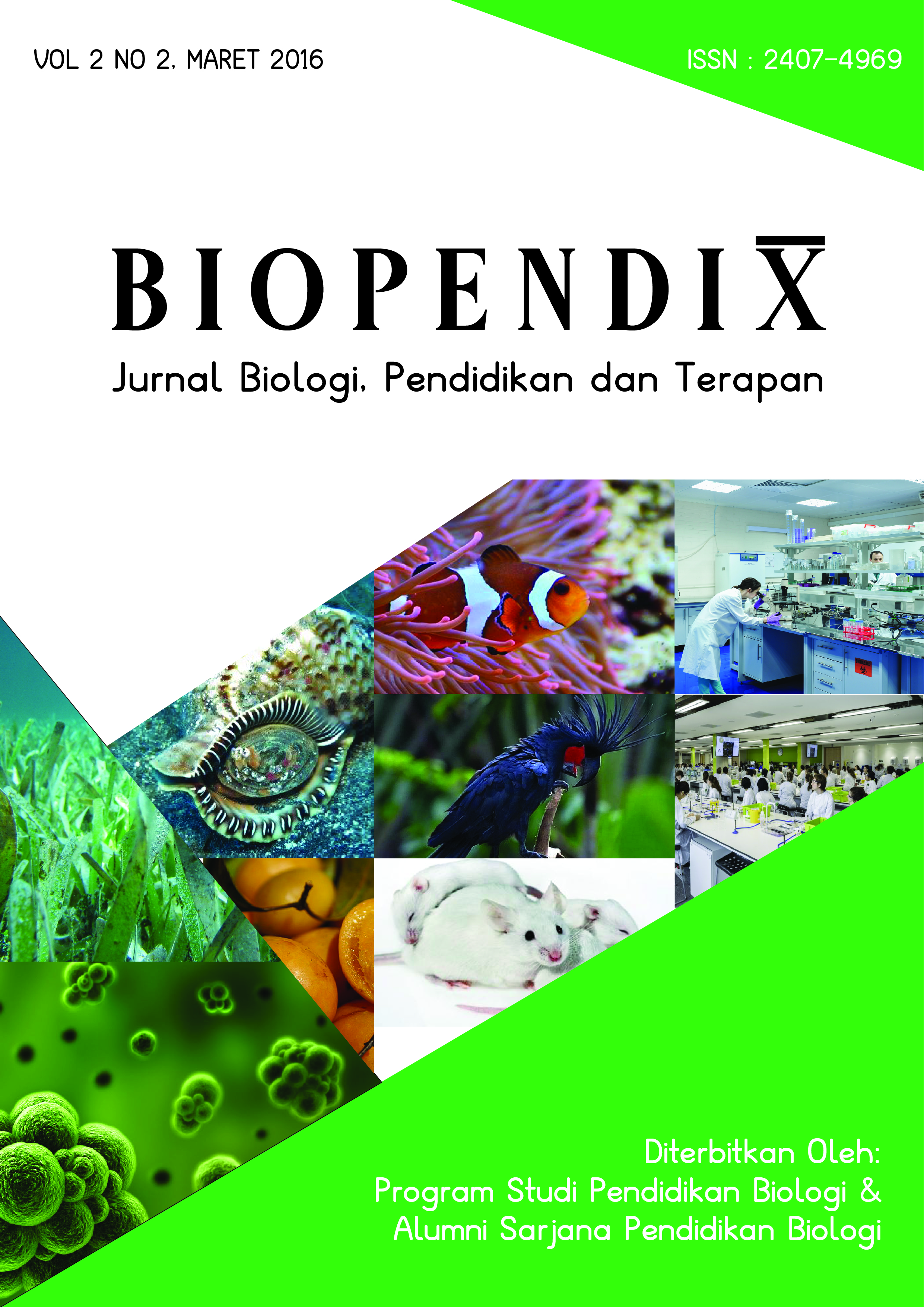
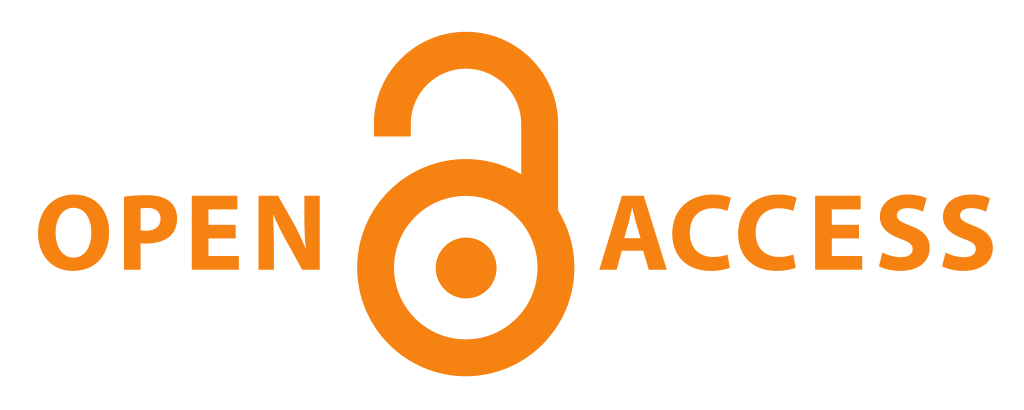
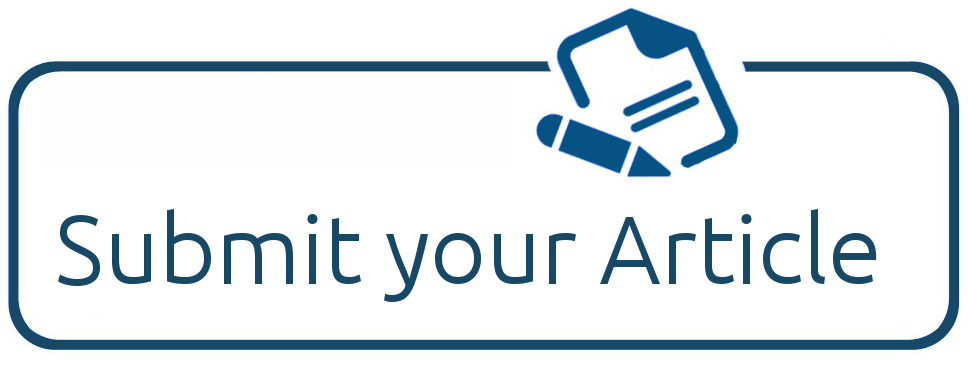
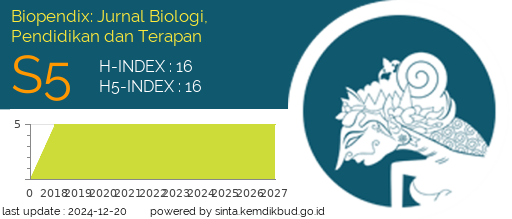
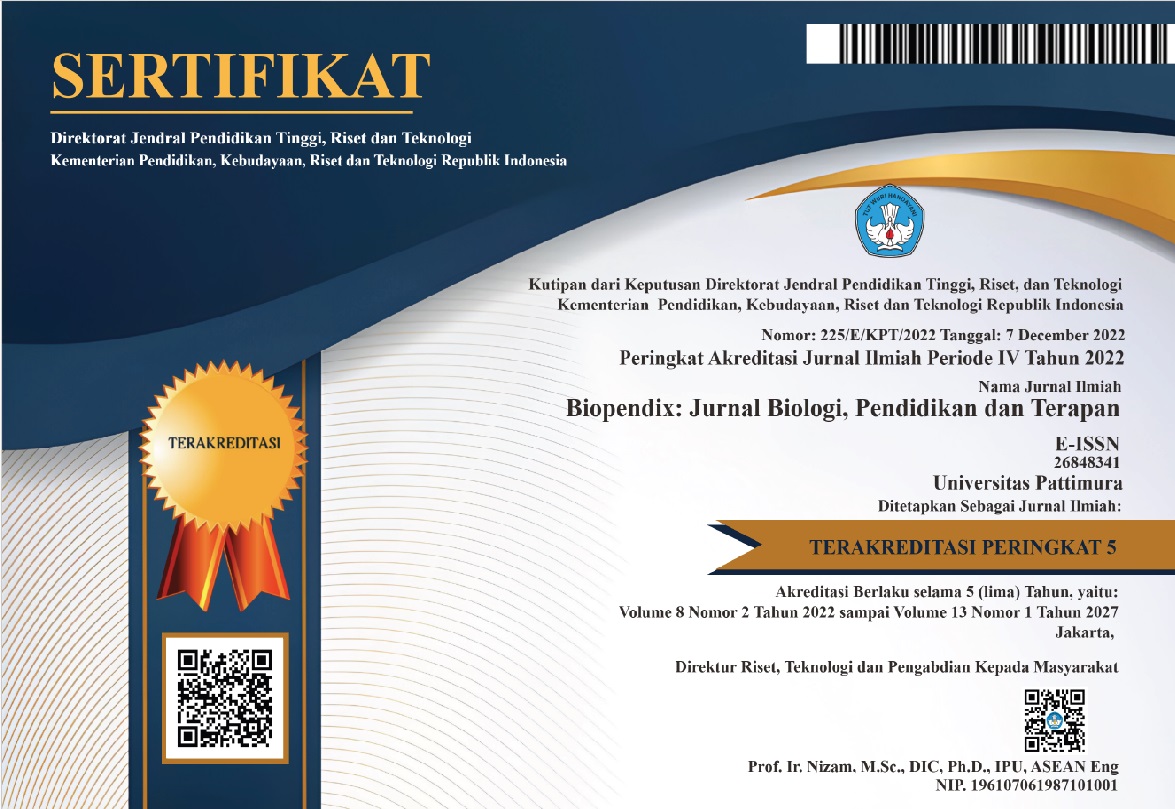 2
2





